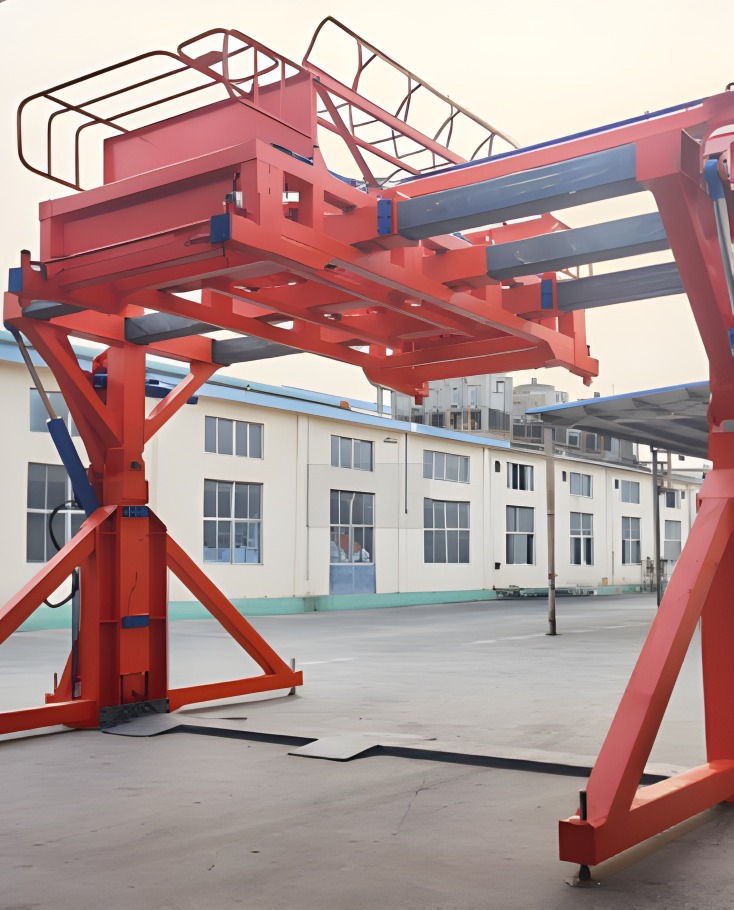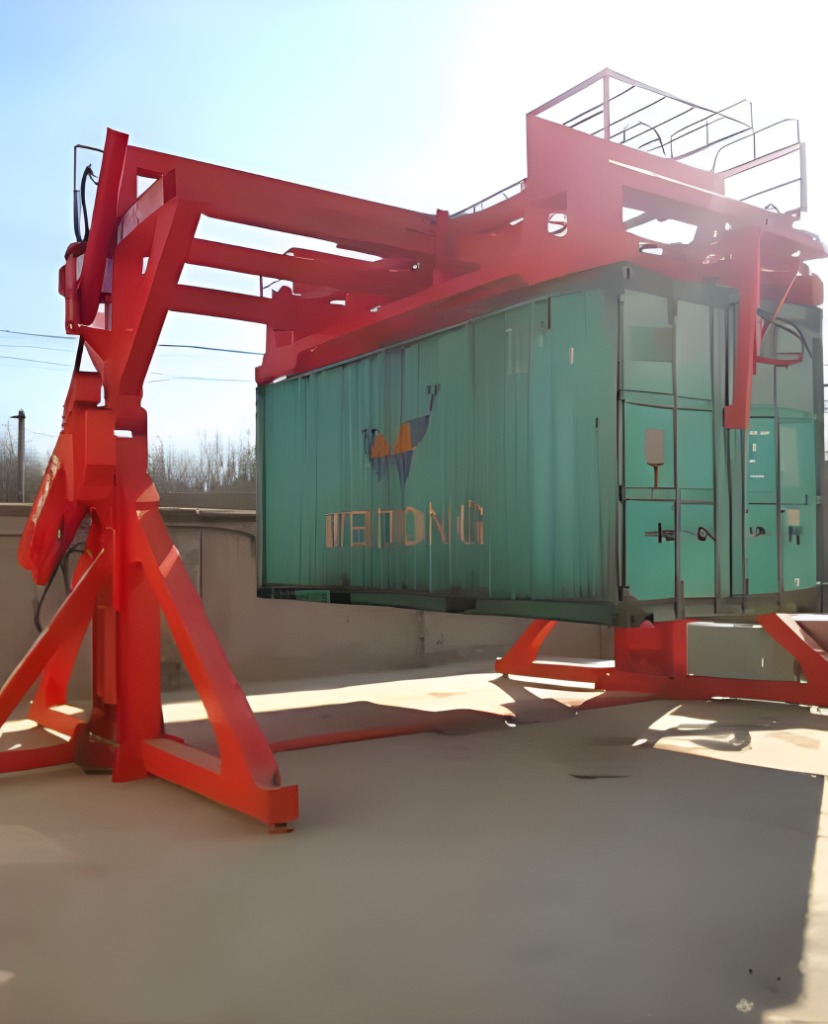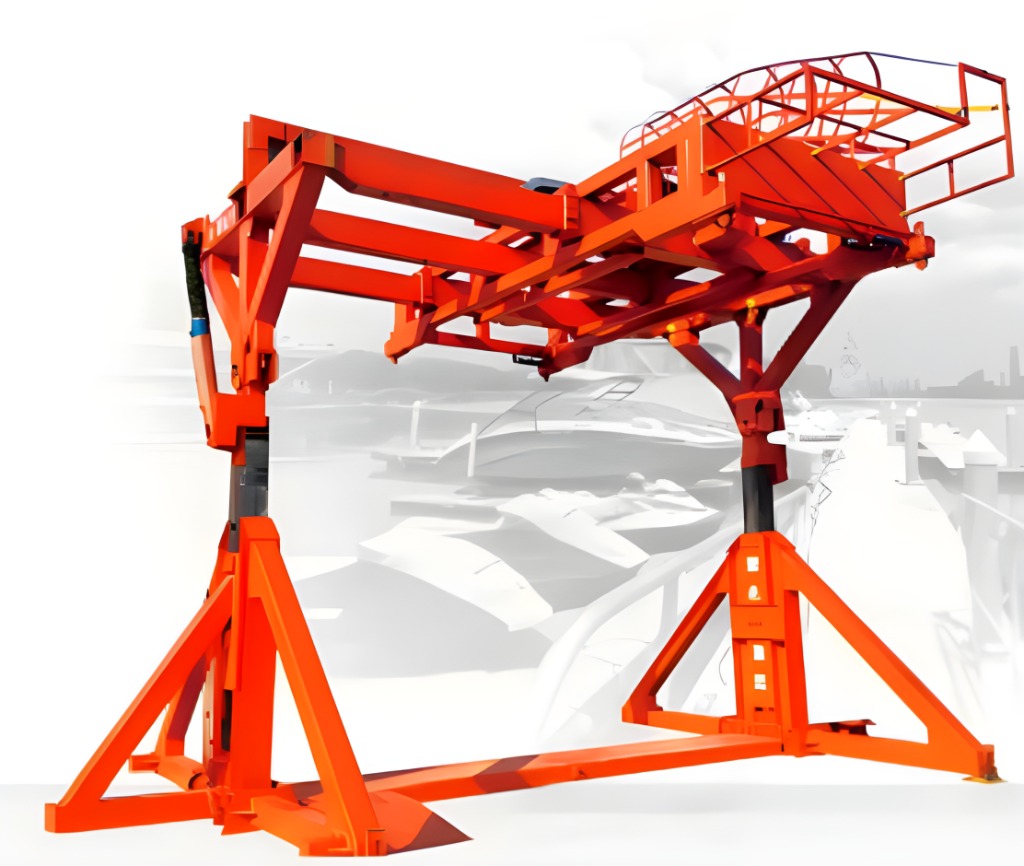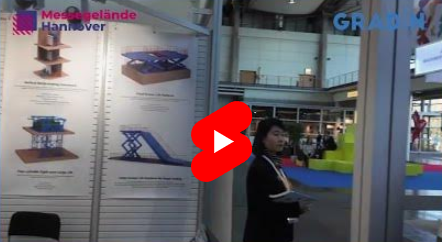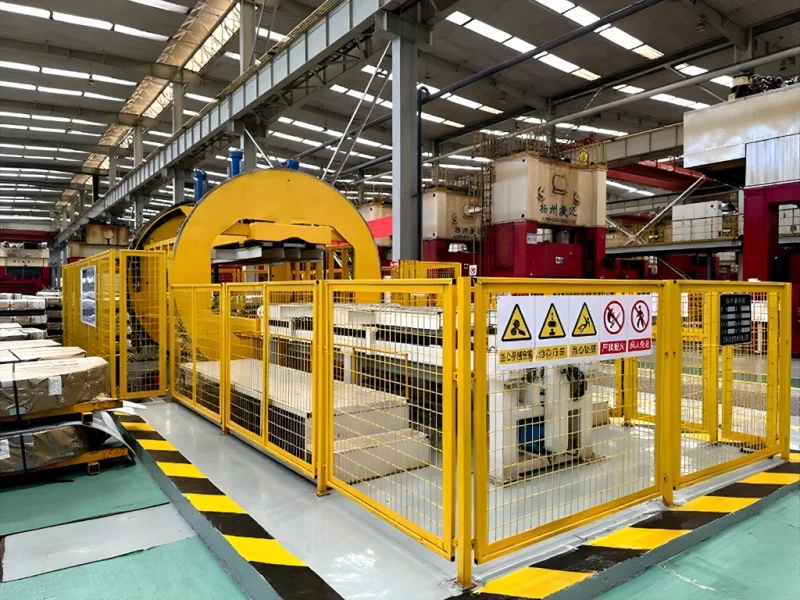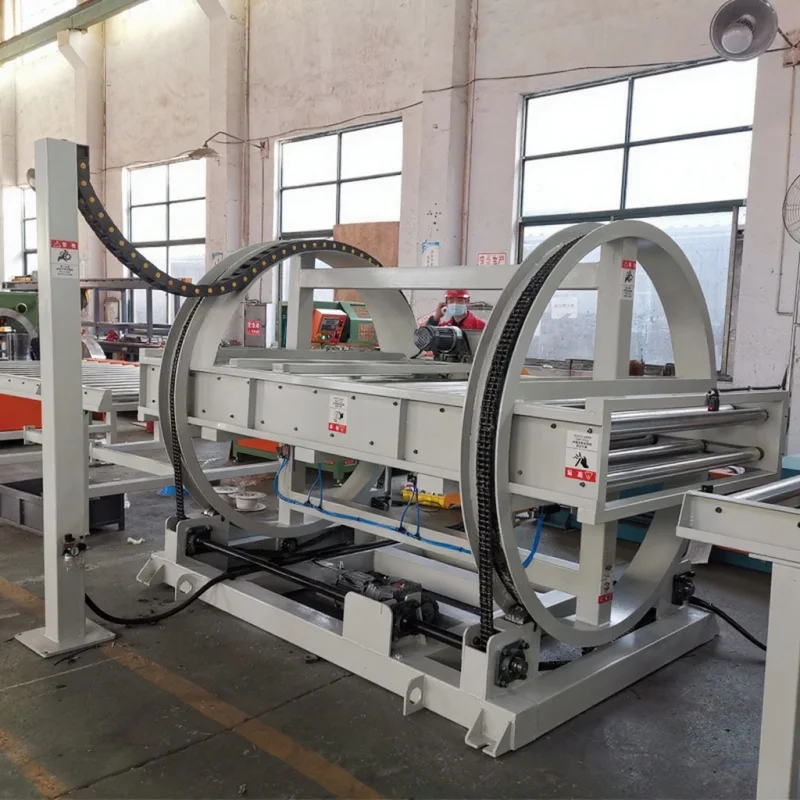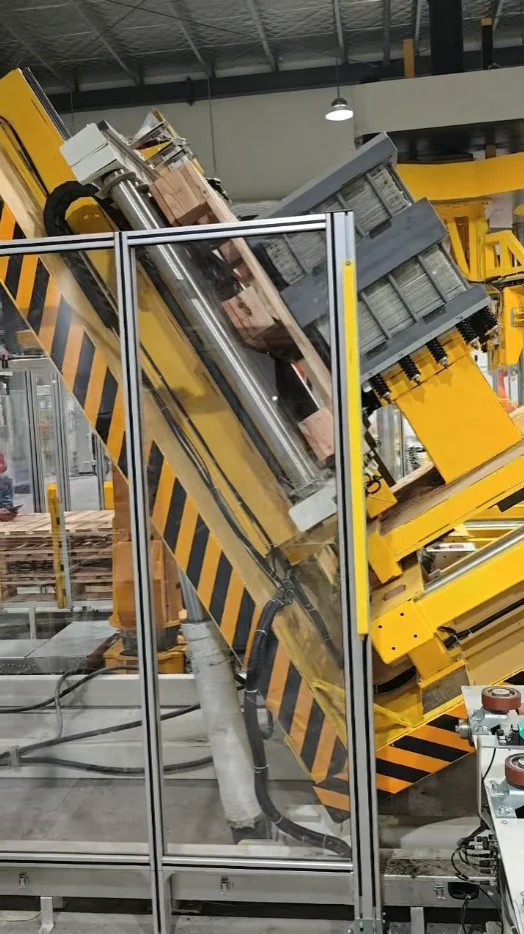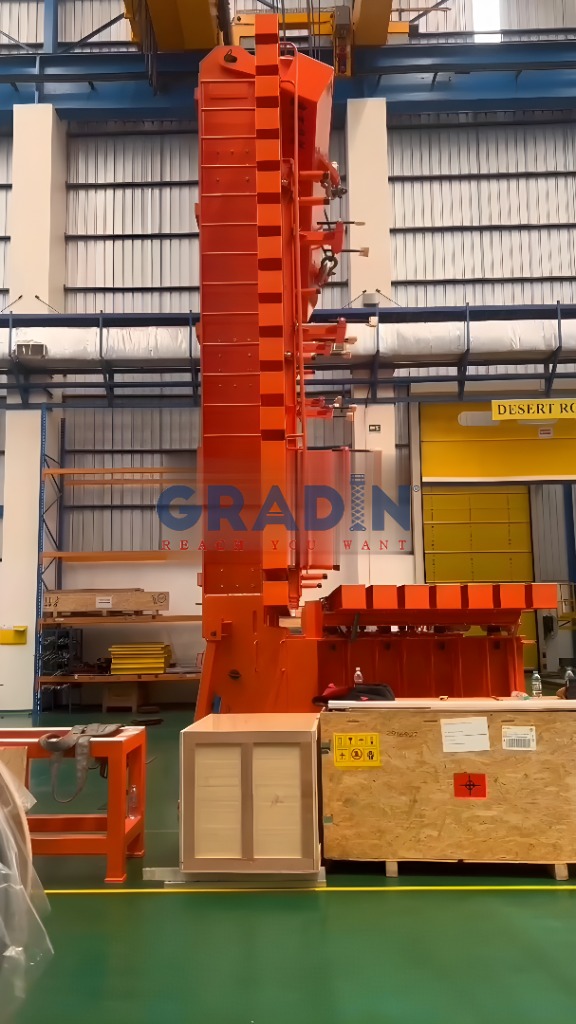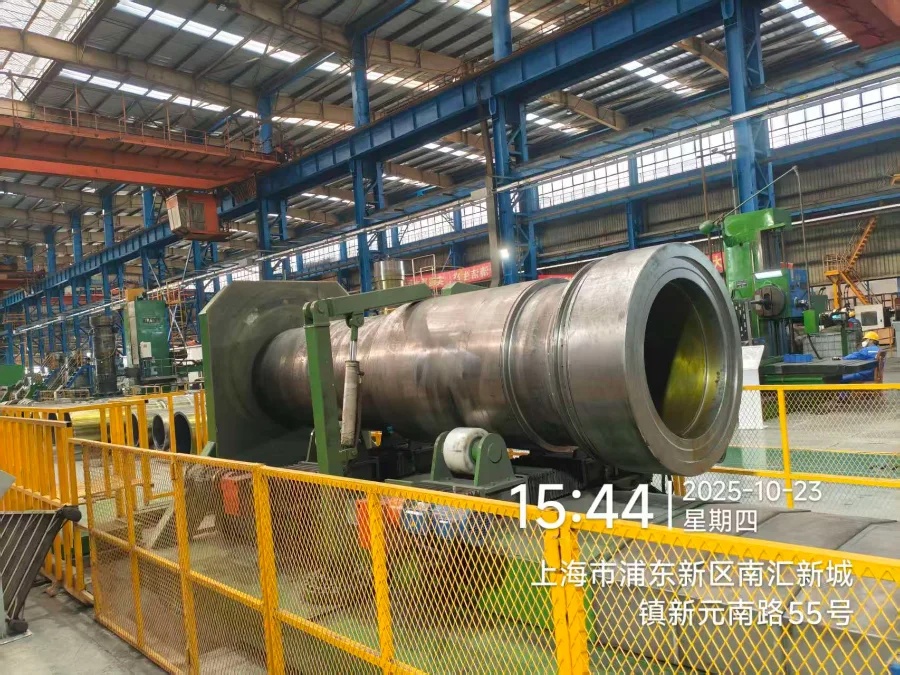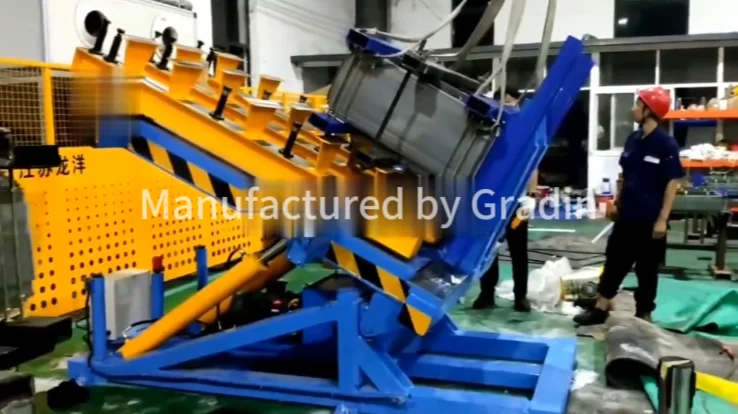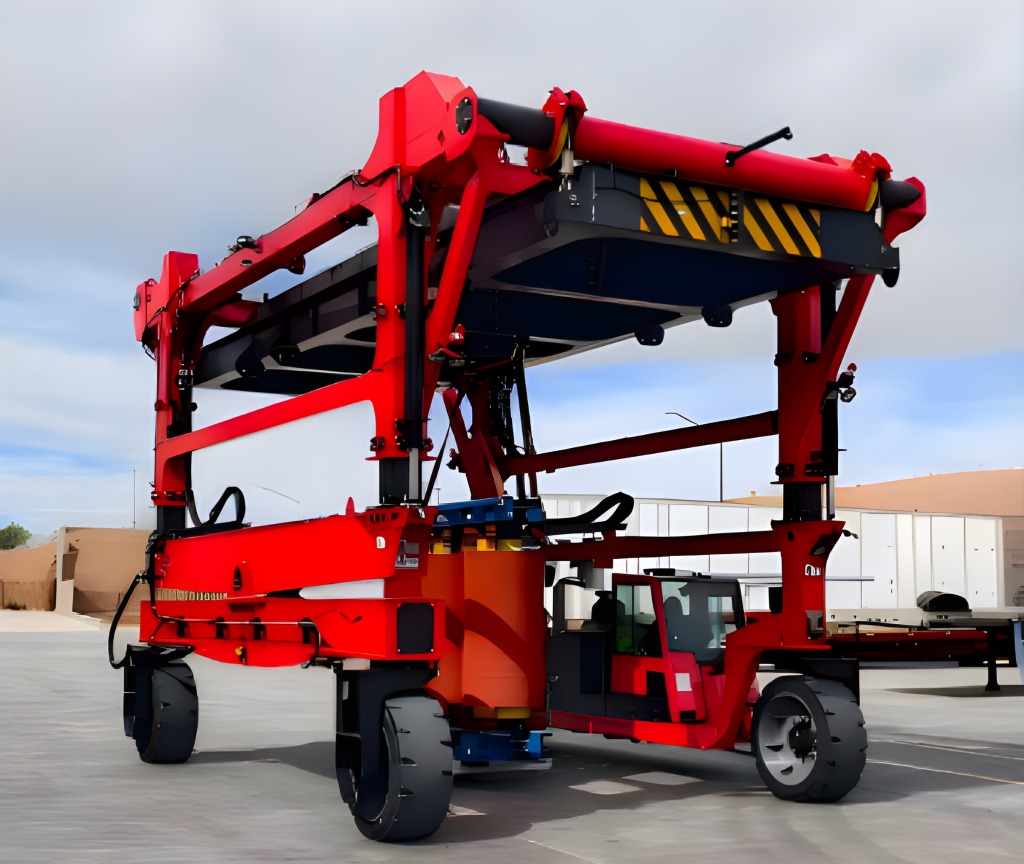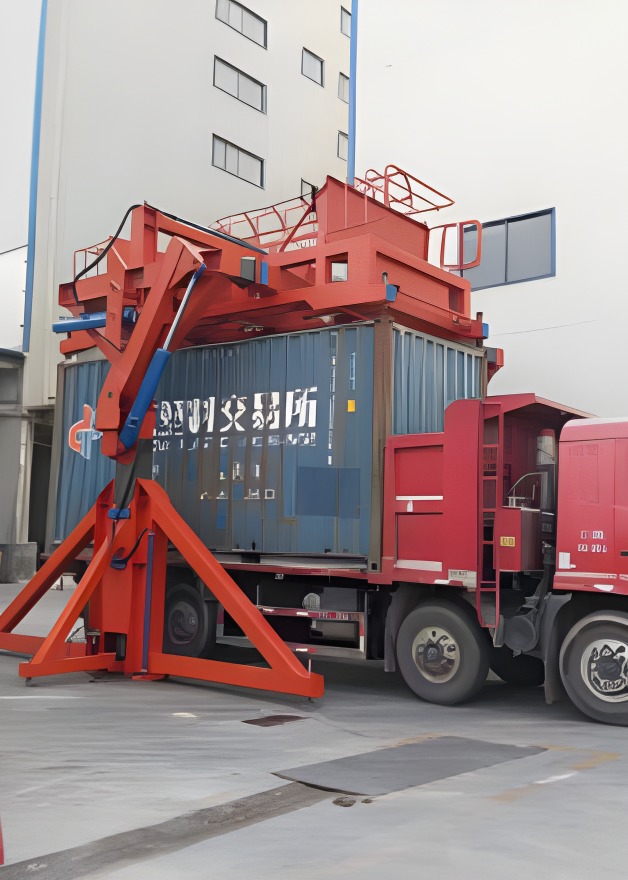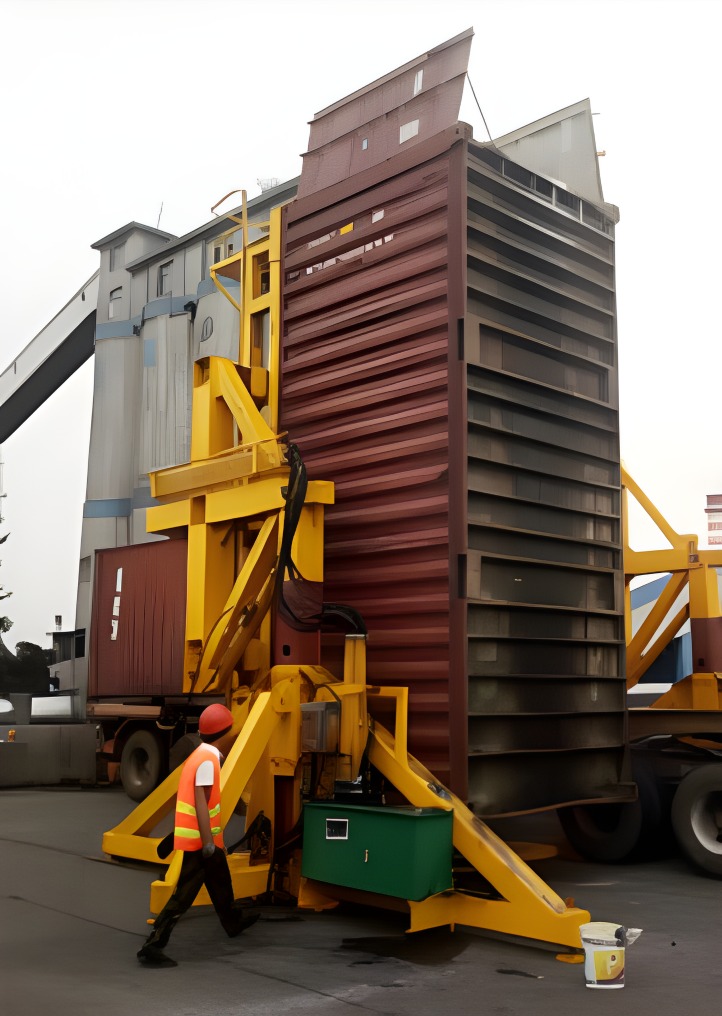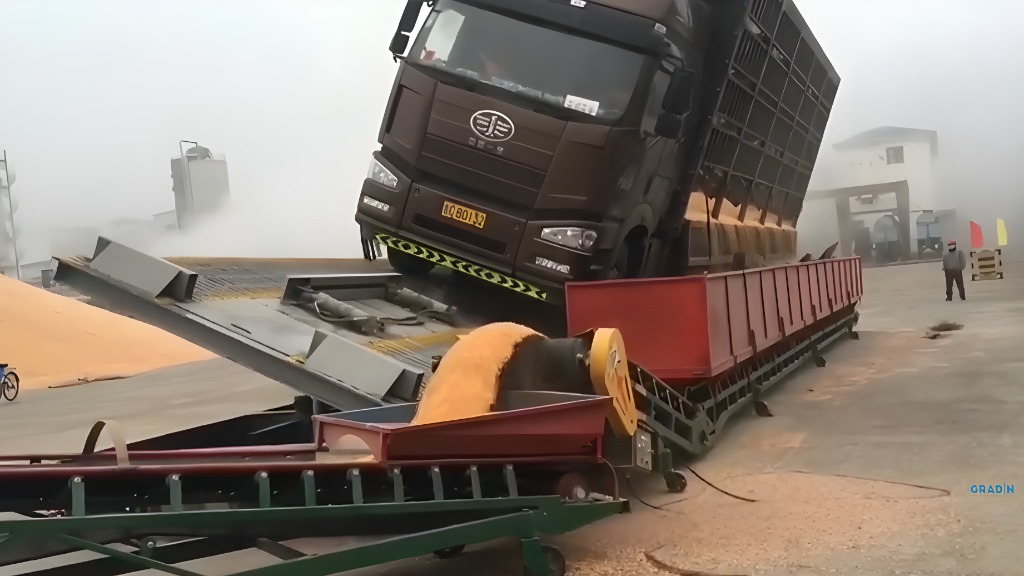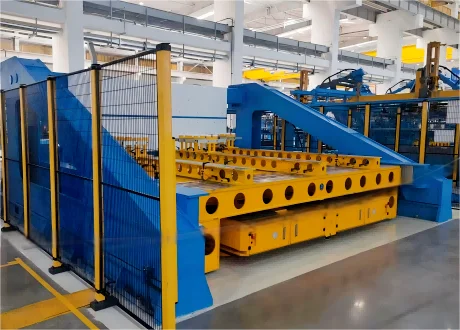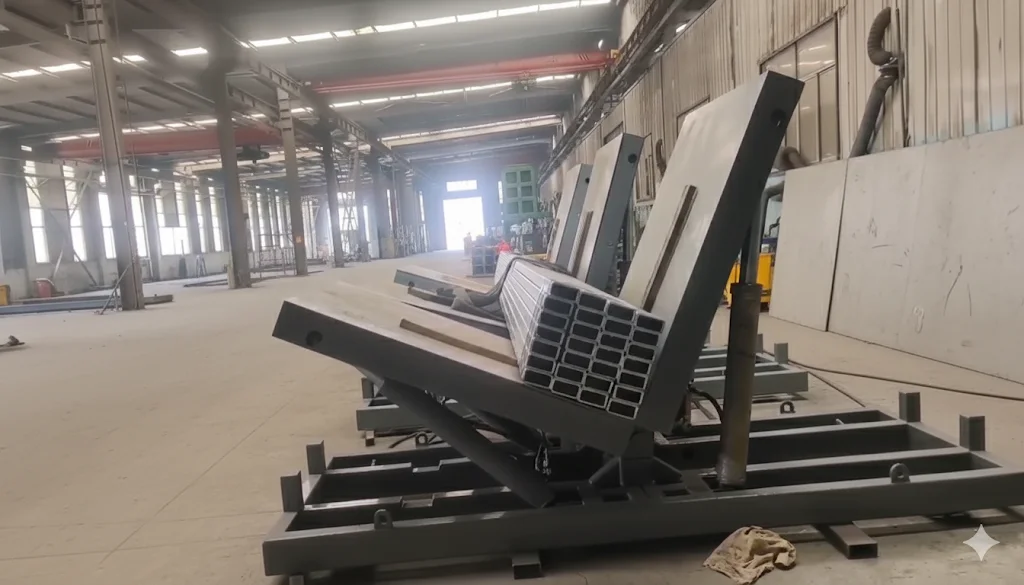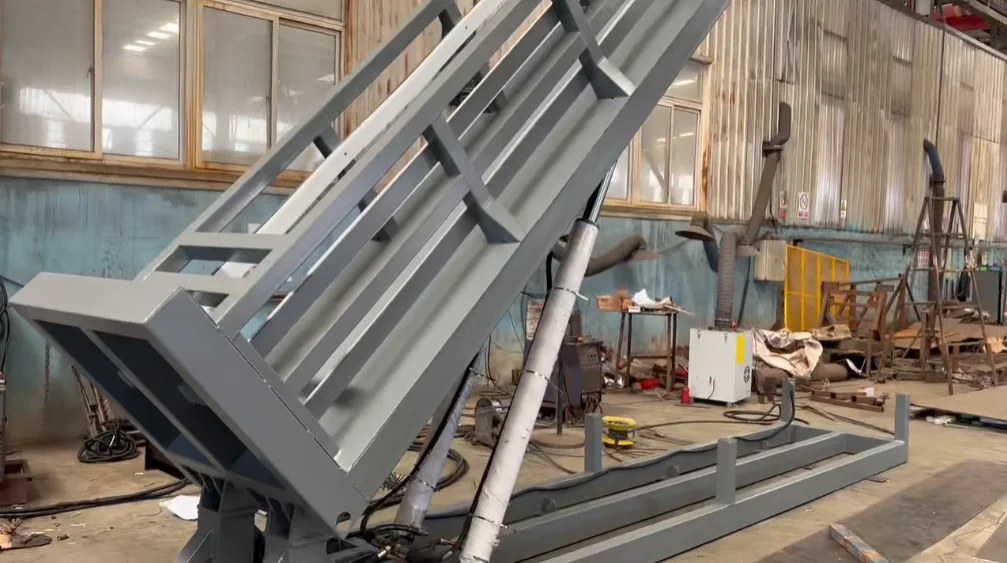9.23.2025 / 5-minute read
Dual-Lane Dual-Flip Container Turning Machine – 135-Ton Heavy Load Dual-Lane Efficient Operation
Overview
his case analysis focuses on the pursuit of extreme container handling efficiency at modern ports and logistics hubs, introducing a dual-lane dual-flip container turning machine.
The machine adopts an innovative dual-lane parallel design, paired with a 180-degree precise flipping capability, achieving a significant leap in container handling efficiency.
It perfectly addresses the core pain points of traditional single-lane operation models, such as low efficiency and slow turnover, making it a key piece of equipment for automated terminals and high-efficiency logistics centers.
Basic Parameters
| Parameter Item | Technical Specification |
|---|---|
| Structure Type | Dual-lane independent structure |
| Rated Load | 135 tons (single lane) |
| Container Types Processed | 20-foot standard containers (customizable) |
| Flipping Angle | Adjustable from 0 to 180 degrees |
| Lifting Height | 800 mm |
| Lateral Movement | 2900 mm |
| Motor Power | 15 kW-18.5 kW |
| Power Supply Specifications | 380V/50Hz |
| Total Weight | 115.4 tons |
How It Works
The machine uses a dual-lane independent operation system, with each lane equipped with a complete turning mechanism.
Once a container transport vehicle is positioned, the locking device automatically secures the container, and the hydraulic system drives the turning frame to achieve controlled flipping from 0 to 180 degrees.
The two lanes can operate synchronously or independently without interference.
The advanced control system precisely manages the entire flipping process, ensuring stability and safety under a 135-ton heavy load.
The Challenges
- Operational Efficiency Bottleneck: Single-lane design leads to slower container processing speeds, which cannot meet the throughput demands of modern ports.
- Low Space Utilization: Traditional equipment occupies large areas but has limited efficiency per unit area.
- Safety Challenges: High demands for stability and control precision during heavy-load flipping processes.
- Inadequate Adaptability: Fixed designs struggle to meet the diverse container processing needs.
- High Maintenance Costs: Equipment reliability and ease of maintenance are crucial in high-intensity operating environments.
Solutions
- Dual-Lane Parallel Operation: Allows simultaneous processing of two containers, improving efficiency by nearly 100%.
- Independent Control System: Ensures flexible operation of each lane.
- Heavy-load Precise Control: 112 cylinders work together to ensure stable flipping.
- Advanced Hydraulic System: Achieves precise angle control.
- High-Strength Structural Design: The total weight of 115.4 tons ensures stability under 135 tons load.
- Premium Materials and Advanced Craftsmanship: Guarantees durability of the equipment.
- Intelligent Control System: Real-time monitoring of equipment status, fault self-diagnosis, and safety protection functions.
- Flexible Customization: Can be tailored to customer needs to adjust size and specifications, meeting different operational environments and container types.
Industry Applications
Large Port Terminals: Enhance container transfer and inspection efficiency.
Logistics Hubs: Speed up sorting and repackaging processes.
Special Cargo Handling: Meets the needs of special size and weight container operations.
Emergency Processing Sites: Quickly complete container content inspection and processing.
